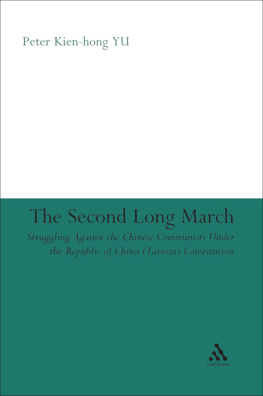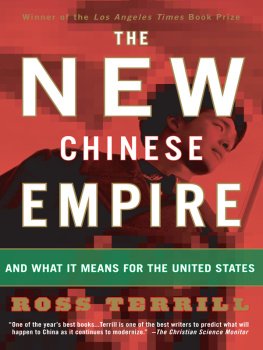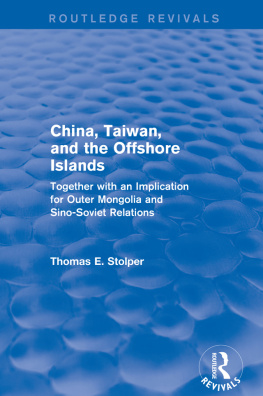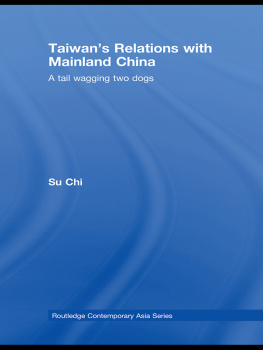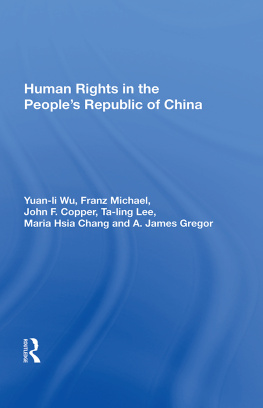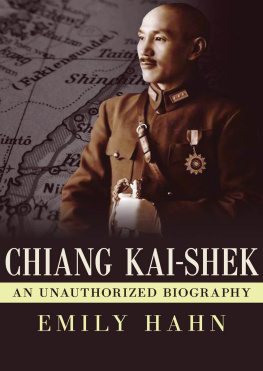The Second Long March
The Second Long March
Struggling against the Chinese Communists under the Republic of China (Taiwan) Constitution
Peter Kien-hong YU
2009
The Continuum International Publishing Group Inc
80 Maiden Lane, New York, NY 10038
The Continuum International Publishing Group Ltd
The Tower Building, 11 York Road, London SE1 7NX
www.continuumbooks.com
Copyright 2009 by Peter Kien-hong YU
All rights reserved. No part of this book may be reproduced, stored in a retrieval system, or transmitted, in any form or by any means, electronic, mechanical, photocopying, recording, or otherwise, without the written permission of the publishers.
Library of Congress Cataloging-in-Publication Data
Yu, Peter Kien-hong, 1953
The second long march: struggling against the Chinese Communists under the
Republic of China (Taiwan) Constitution / Peter Kien-hong Yu.
p. cm.
Includes bibliographical references and index.
eISBN-13: 978-1-4411-6529-9
1. Constitutional lawTaiwan. 2. Constitutional historyTaiwan.
3. Constitutional lawChina. 4. DemocratizationChina.
5. TaiwanPolitics and government1949
6. ChinaPolitics and government1949
7. TaiwanRelationsChina. 8. ChinaRelationsTaiwan.
I. Title.
KNP207.Y82 2009
342.51dc22
2008030565
Typeset by Newgen Imaging Systems Pvt Ltd, Chennai, India
Printed in the United States of America
To
William Thomas Liu, my colleague at
Illinois, NUS, Lingnan, and Wenzao,
for his wisdom, insights, and enlightenment.
Contents
Foreword
Peter Kien-hong YU was my colleague at the National Sun-Yat-sen University in Kaohsiung Municipal City from May 1984 to the mid-1990s. Since then, I have seen him publish many books and articles, in both English and Chinese.
There are many publications related to the Republic of China (ROC), Taiwan, Formosa, etc. Some scholars and experts have advanced different theories and applied different models. In this book, the author has specifically argued that it is the ROC s national title and the respect for and later practice of the Constitution, which can help explain why the people of the Taiwan area still live under a non-Communist system. Up to May 2008, despite attempts by some politicians to drastically and recklessly make changes to the ROC Constitution, which has existed since January 1947, we see that the highest law of the land still includes the national territory on the mainland, including Outer Mongolia. I submit that this kind of wise policy should be continued under the MA Ying-jeou administration. Otherwise, the Communist Party of China (CPC) may be compelled to use force to settle the Taiwan issue once and for all, because neither its leader, HU Jintao, nor his successors can afford to be labeled as the qianguzuiren (eternal guilty man) in the 10,000-year Chinese history.
YU s work is very easy to read and understand and his narratives are well and carefully documented. It is unique to see that the anti-Communists and non-Communists at home and abroad are conducting their second long march for the sake of the Zhonghuaminzu (Chinese nation).
In relation to this book, readers are advised to read YUs two other interesting articles. The first one is titled A Dialectical Analysis of the Term, New Taiwanese, which is Chapter Five in his early 2002 book, The Crab and Frog Motion Paradigm Shift: Decoding and Deciphering Taipei and Beijings Dialectical Politics. His argument is simply that the new or old people of the Taiwan area are all Chinese. The other article, The Dangwei Strategy in Taiwan: Its Implications for Mainland China, which was published in the September 2004 issue of China: An International Journal (Singapore), is worthwhile reading because the then ruling party, Democratic Progressive Party (DPP) is repeating its strategy and tactics from being against the Nationalist Party of China (NPC or Kuomintang), to being against the Chinese Communists from May 2000 to May 2008. It is doubtful that the DPP can succeed this time in making the CPC an opposition party, if they keep on thinking only about Taiwan and Penghu/the Pescadores, while doing nothing to physically promote democracy on the mainland. Readers should also read YU s January 2005 book, Hu Jintao and the Ascendancy of China, because in that book, he has demonstrated that, dialectically, we cannot rule out the possibility that the CPC could change the national title from the Peoples Republic of China (PRC) to the ROC for the sake of peaceful Chinese reunification between the mainland and Taiwan (see p. xiii of this book). Indeed, Beijing has only two options to settle the Taiwan issue. If it does not use force, it has to use a peaceful method. Changing the national title will make other countries ponder twice and thrice whether or not to recognize and establish diplomatic relations with the so-called Republic of Taiwan (ROT). In any case, YU has demonstrated that activists for the creation of a dejure ROT simply cannot succeed and I fully concur. That MA Ying-jeou decisively won the March 22, 2008 presidential election is the ample proof. In this connection, in early November 2008, CHEN Yunlin, who chairs the mainland-based Association for Relations Across the Taiwan Straits (ARATS) since June 2008, visited Taipei. This historic development may well pick up the momentum for restructuring the political system in the Chinese mainland.
Richard H. Yang, Ph.D.
Professor Emeritus
Washington University, St Louis
Preface
I wish to thank Leszek Buszynski for his encouragement. His suggestion, in the Fall of 2005, prompted me to write this book. We first met each other at the National University of Singapore, when I was with the East Asian Institute. Leszek is a renowned scholar and a keen observer of Asian politics. He is fully aware of the destiny of the non-native Taiwanese who have lived in the Taiwan area since the Republic of China (ROC) Government chose Taipei as the provisional capital in December 1949. I salute him.
In September 2008, the draft of this book was also accepted for possible publication by Palgrave-Macmillan (New York). One of the reviewers wrote the following words: YU s manuscript reflected a high quality of scholarship..., and it will stimulate the interest of study and debate in both Mainland and Taiwan, as well as in the world politically and scholarly. I felt flattered. I strongly encourage readers to study the figure at the end of this preface. One can also read my chapter, Beijing versus Taipei under the One China Principle which was included in an edited 2006 book, Ensuring Interest, by HO Khai Leong and HOU Kok Chung of the Institute of China Studies, University of Malaya or the summer 2008 journal article in Asian Affairs (U.S.). The figure represents Beijings grand strategy in playing politics against Taipei. I think I have decoded the Chinese Communist logic. At this point in time, it is difficult to tell which side of the Taiwan Strait will first collapse, the ROC, which is a lighthouse for democracy on the mainland or the Peoples Republic of China (PRC), which will continue to peacefully rise in the next few decades. In March 2007, the ruling party in mainland China, in a front page Guangming Daily commentary peppered with Marxist terms and classical aphorisms, again warned its members who are extravagant and live loosely: The prosperity and stability of a dynasty or political power is not absolute. Rise and fall and victories and defeats are common occurrences. The matter is, indeed, very serious, because, in September 2007, the Chinese mainland

